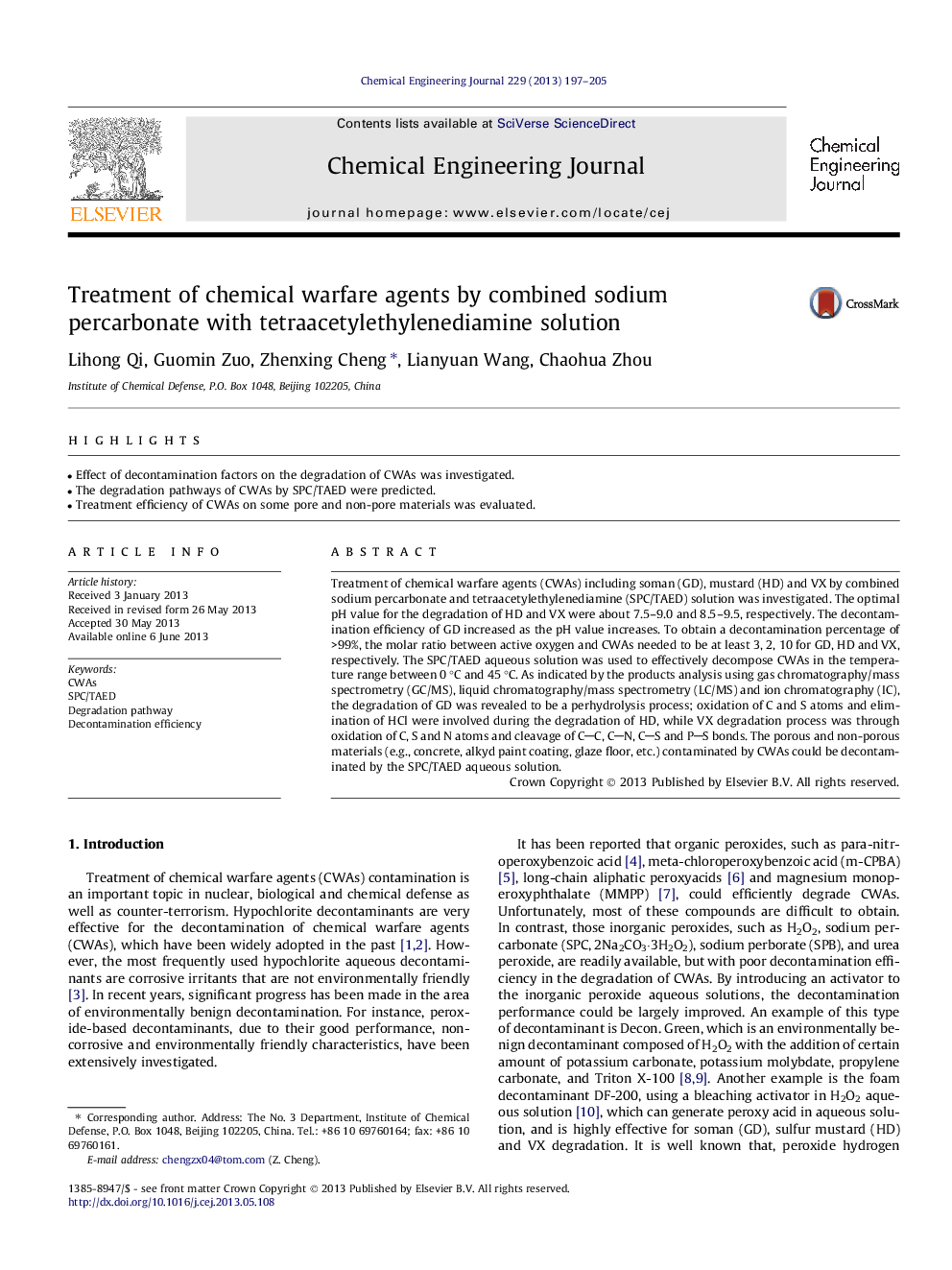| Article ID | Journal | Published Year | Pages | File Type |
|---|---|---|---|---|
| 6586960 | Chemical Engineering Journal | 2013 | 9 Pages |
Abstract
Treatment of chemical warfare agents (CWAs) including soman (GD), mustard (HD) and VX by combined sodium percarbonate and tetraacetylethylenediamine (SPC/TAED) solution was investigated. The optimal pH value for the degradation of HD and VX were about 7.5-9.0 and 8.5-9.5, respectively. The decontamination efficiency of GD increased as the pH value increases. To obtain a decontamination percentage of >99%, the molar ratio between active oxygen and CWAs needed to be at least 3, 2, 10 for GD, HD and VX, respectively. The SPC/TAED aqueous solution was used to effectively decompose CWAs in the temperature range between 0 °C and 45 °C. As indicated by the products analysis using gas chromatography/mass spectrometry (GC/MS), liquid chromatography/mass spectrometry (LC/MS) and ion chromatography (IC), the degradation of GD was revealed to be a perhydrolysis process; oxidation of C and S atoms and elimination of HCl were involved during the degradation of HD, while VX degradation process was through oxidation of C, S and N atoms and cleavage of CC, CN, CS and PS bonds. The porous and non-porous materials (e.g., concrete, alkyd paint coating, glaze floor, etc.) contaminated by CWAs could be decontaminated by the SPC/TAED aqueous solution.
Related Topics
Physical Sciences and Engineering
Chemical Engineering
Chemical Engineering (General)
Authors
Lihong Qi, Guomin Zuo, Zhenxing Cheng, Lianyuan Wang, Chaohua Zhou,
